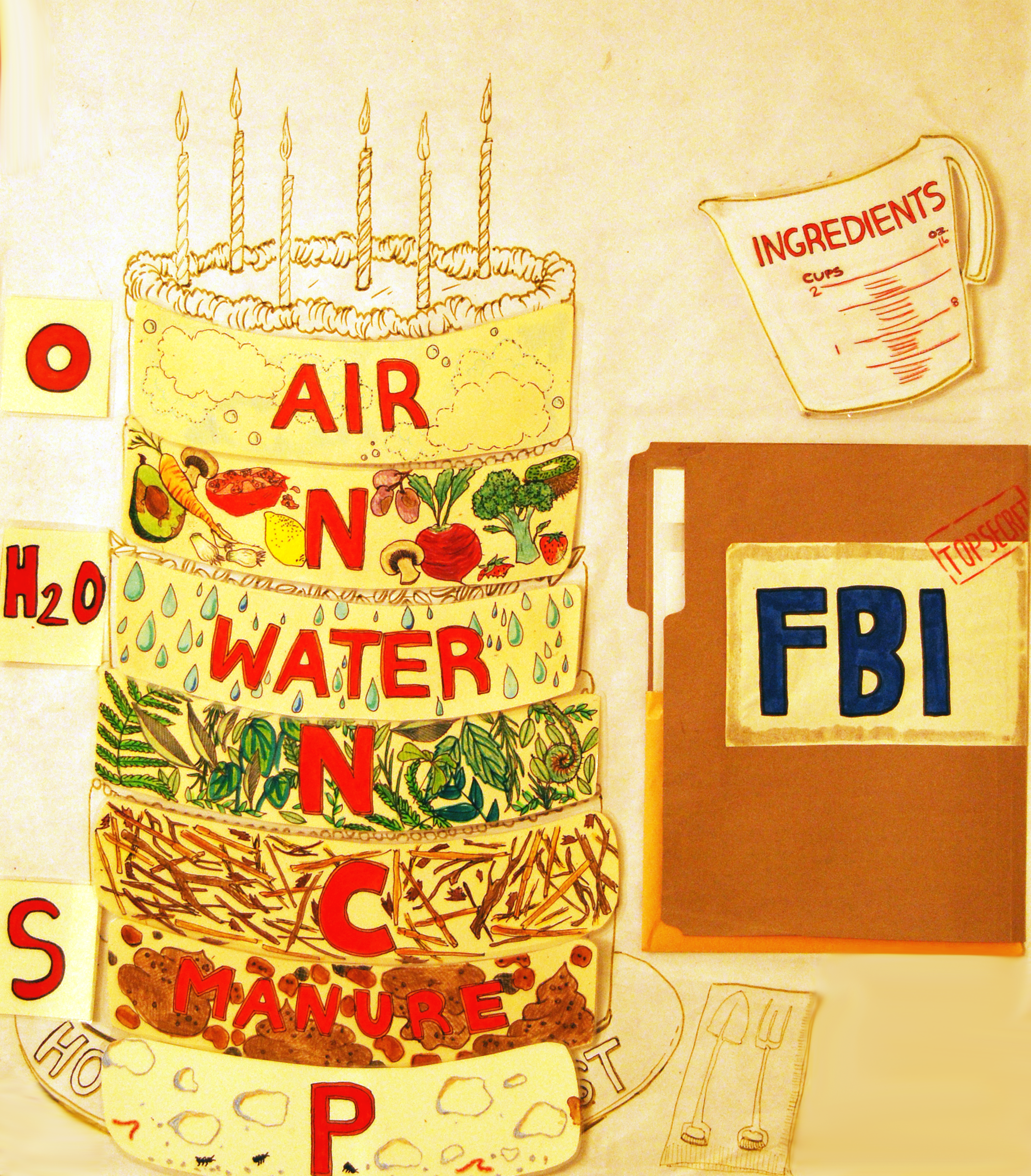Materials
- Compost Cake Visual Aid with Velcro-backed ingredient cards, elements, and file folder
- Nitrogen Cycle Visual Aid
- Example cover crop plant (legume) with nitrogen nodes on roots
- The Wind Blows game cards
- Fungus, bacteria, invertebrates (FBI) images





